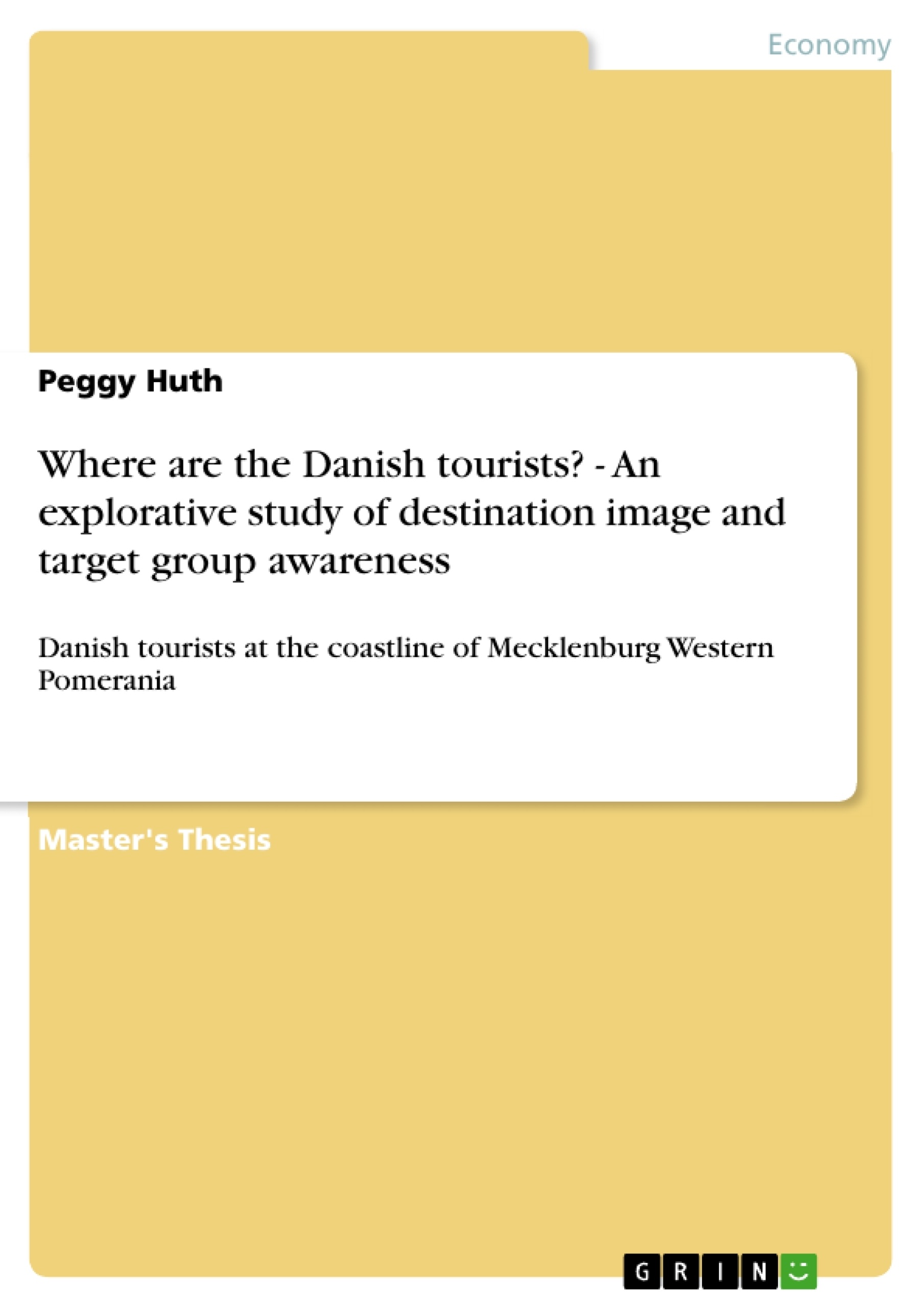In 2007, the biggest sea side resort of Mecklenburg Western Pomerania, the town of Kühlungsborn, welcomed circa 209 Danish visitors.
Between January and April 2008, the number of Danish visitors had already doubled the above stated number. Consequently, this was attributed to the direct marketing activities of the destination’s private tourism businesses on the Danish target market and had resulted in a sudden increase of bookings from potential Danish guests.
Thus, this thesis takes its point of departure in the existence of an observable phenomenon of the tourism industry of Mecklenburg Western Pomerania (MV),namely the very low density and almost absence of Danish tourists at the MV Baltic coastline, although they present a highly profitable and potential target group.
The main objective of the present thesis is the demonstration of an explorative insight view into the existing level of perceived destination image and awareness of Danish tourists in regard to their potential holiday destination at the Baltic coastline of Mecklenburg Western Pomerania (MV), in order to emphasise the enormous potential of the Danish target market for the tourist destinations at the MV coastline.
Additionally, the lack of target group awareness by the MV destination marketeers will be demonstrated, as, presently, this potential seems to be rarely recognised and in particular, not fully utilised.
The theoretical frameworks used in order to analyse the above stated phenomenon will derive from destination marketing theories and theories of destination image formation as well as destination brand image, also in a local and international context.
Additionally, theories of general tourist behaviour and particularly the importance of target group awareness by destination marketeers will be discussed in the tourism context of the MV coastline.
Following the theoretical considerations, a recent situation analysis of the MV tourism industry will be provided. The main problems of MV regarding its position on the international tourism market will be discussed including the crucial demand for the development of an international image and brand.
Inhaltsverzeichnis (Table of Contents)
- Introduction
- Objective of the thesis - Problem formulation
- Structure of the thesis
- Methodology
- Research Methods
- Primary and Secondary Data
- Terminology
- Limitations
- Main theoretical foundations
- Tourism
- The tourist destination
- Destination Marketing
- International Market segmentation
- Destination image – the impact of already existing perceptions
- Destination Brand
- First time visitors are still mouldable! - The impact of previous visitation on the destination image
- Situation Analysis - Tourism in Mecklenburg Western Pomerania
- Tourism as a main economic factor for Germany
- Tourism in Mecklenburg Western Pomerania
- The typical tourist of MV
- International tourism of Mecklenburg Western Pomerania
- Where are the foreign guests? – Some basic problems of the international tourism sector in MV
- The absence of an international image
- Poor transport systems
- Competitiveness and missing target-group awareness
- The Danish source market
Zielsetzung und Themenschwerpunkte (Objectives and Key Themes)
This thesis explores the lack of Danish tourists at the Baltic coastline of Mecklenburg Western Pomerania (MV), despite the region's potential as a tourist destination for this target group. It aims to demonstrate the low level of awareness and perceived destination image among Danish tourists regarding MV, highlighting the untapped potential of this market. The thesis draws upon theories of destination marketing, destination image formation, and destination branding. It also explores the importance of target group awareness and intercultural competencies in tourism.- The low density and almost absence of Danish tourists at the MV Baltic coastline.
- The lack of target group awareness by the MV destination marketeers.
- The importance of destination image formation and branding in attracting international tourists.
- The need for improved transport systems and intercultural competencies within the MV tourism sector.
- The unique attractions and potential of the MV coastline for the Danish market.
Zusammenfassung der Kapitel (Chapter Summaries)
The introduction outlines the objective and structure of the thesis, focusing on the low number of Danish tourists at the Mecklenburg Western Pomerania (MV) coastline. It highlights the potential of this market and the need for an explorative insight into the existing destination image and awareness among Danish tourists. The methodology chapter discusses the research methods employed, including primary and secondary data collection, terminology used, and limitations of the study. The main theoretical foundations chapter explores key concepts from destination marketing theories, including destination image formation, destination branding, and target group awareness. The chapter also examines the significance of intercultural competencies in tourism and the impact of previous visitation on destination image. The situation analysis chapter provides an overview of the tourism industry in Mecklenburg Western Pomerania (MV), highlighting its economic importance and the characteristics of the typical tourist. It delves into the challenges faced by the MV tourism sector in attracting international visitors, specifically focusing on the lack of an international image, poor transport systems, and inadequate target group awareness. The chapter on the Danish source market examines the potential of the Danish market for MV tourism, highlighting the need for improved target group awareness and cross-border marketing activities. The chapter concludes by emphasizing the need for MV to strengthen its image and utilize the preconditions for a successful inbound tourism market from Denmark.Schlüsselwörter (Keywords)
This thesis focuses on the potential of the Danish market for the tourism destinations at the Mecklenburg Western Pomerania (MV) coastline. It explores the lack of target group awareness and perceived destination image among Danish tourists, emphasizing the need for improved cross-border marketing activities and intercultural competencies within the MV tourism sector. Key concepts explored include destination image formation, destination branding, target group awareness, and international market segmentation. The thesis highlights the unique characteristics of the MV coastline and its potential to attract Danish visitors through strategic tourism development and promotion.- Quote paper
- Peggy Huth (Author), 2008, Where are the Danish tourists? - An explorative study of destination image and target group awareness, Munich, GRIN Verlag, https://www.grin.com/document/118942



